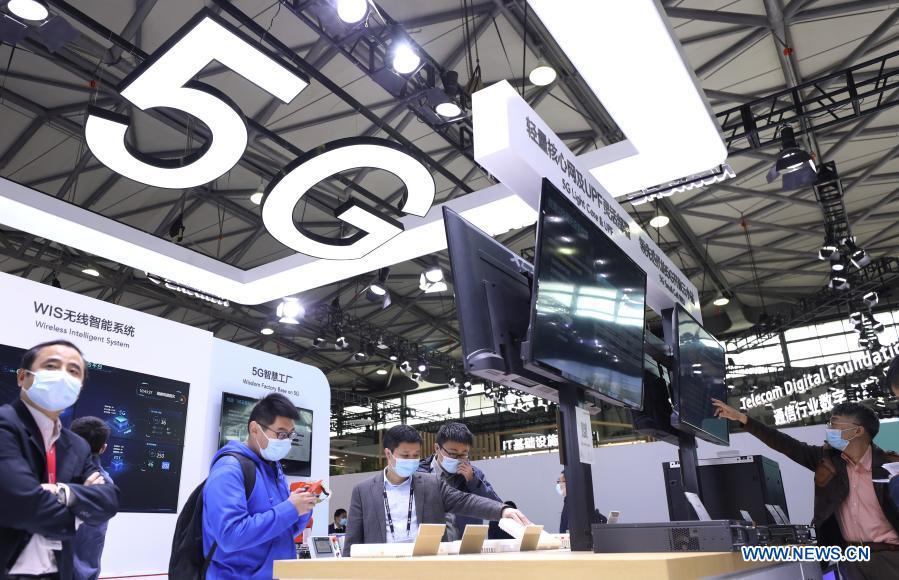

Photo taken on Feb. 23, 2021 shows a view of the Mobile World Congress (MWC) Shanghai 2021 in east China's Shanghai. [Photo/Xinhua]
Oceanic coverage of 5G networks and related applications should be significantly deepened in Shanghai by 2024 so that the city can grow into a powerhouse for smart ocean technologies, said the local government.
The above goals were laid out in an action plan jointly released by the local administrative bodies on Friday.
According to the action plan, Shanghai will build an integrated network connecting all land, sea, air and space internet infrastructure platforms. The development of navigation, wind power and offshore engineering should be coordinated so that facilities are connected across these industries.
The application of 5G technologies should be promoted for more scenarios, including marine supervision, science and technology, marine economy and intelligent shipping. Risk evaluations should be made to test the security of applying 5G technologies in the marine environment, according to the action plan.
Specifically, the advantages of 5G, including larger bandwidth, low latency and wide connectivity, should add more intelligent aspects to the industries of aquaculture and fishing, shipping, tourism, offshore photovoltaics and offshore wind power.
The action plan noted that a 5G-based private network should be built for the cruise industry to promote the high-quality development of Shanghai's international cruise economy, which will be part of the efforts to deepen the integration between the marine and digital economies.
Adora Magic City, China's first domestically built large cruise ship that was made by Shanghai Waigaoqiao Shipbuilding Co, is the world's first 5G-based cruise ship, with the 5G network specially created by China Telecom's Shanghai branch. The ship completed its first sea trial and returned to its home port of Shanghai in late July.
Additionally, Shanghai should explore building a 5G intelligent ship simulation laboratory where frontier scientific theories are nurtured and basic research is conducted. Marine environmental perception, sea-powered systems, marine green resources and smart ships should be the major research areas, said the recently released action plan.
Industrial data acquisition and transmission, as well as predictive maintenance, should be more widely used in shipbuilding and container manufacturing with 5G proliferation. The automation of ports and freight yards should be accelerated by integrating 5G, artificial intelligence and big data, stated the plan.
Xie Qunwei, director of the Shanghai Maritime Safety Administration, said that the integrated application of 5G technologies is an important engine to drive the city's digitalization and smart transformation. It is with high-quality network coverage that smart transformation in the shipping industry can be made possible.
More pilot programs and projects applying 5G technologies in the shipping industry should be launched so that successful results can be replicated more rapidly and promoted more extensively, said Wang Tianguang, head of the Shanghai Communications Administration.
Shanghai launched its attempt at 5G applications in the marine sector earlier. The action plan rolled out in March 2022 to promote 5G applications in smart manufacturing, steel and ports is a good start, said Qin Ling, deputy director of the Lingang communications management office under the Shanghai Communications Administration.
Data provided by the Shanghai municipal government showed that the metropolis built a total of 78,835 5G base stations by the end of May, with an average annual growth rate of over 65 percent. More than 12 base stations are set up per square kilometer in Shanghai, the highest coverage density in China.
